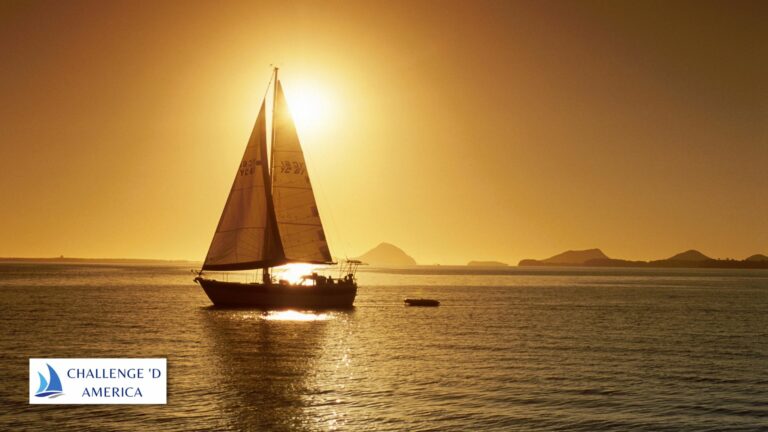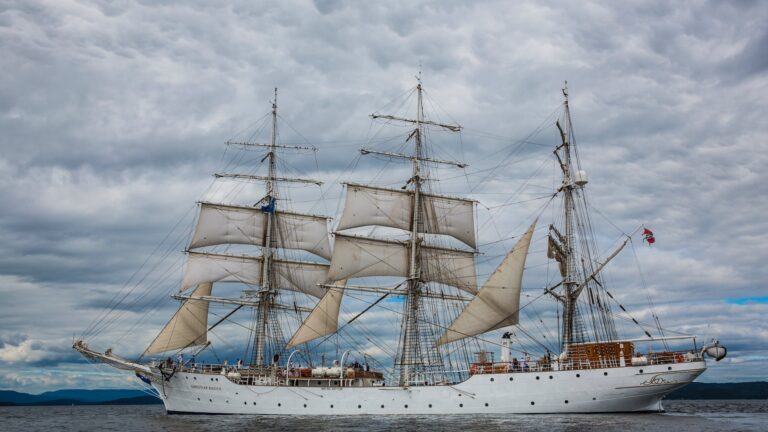Can You Sail a 30 Foot Boat By Yourself?
Sailing single-handedly is an achievement that requires skill, knowledge, and confidence, particularly if you are sailing on your own in a smaller vessel of around thirty feet or less.
Whether you are an experienced sailor or completely new to the sport, understanding what size boat can be sailed single-handedly is essential if you want to stay safe while enjoying the freedom and independence of sailing alone.
In this article we will explore what it takes to sail solo in a thirty foot sailboat, including factors to consider when selecting such a vessel, safety tips for sailing alone, and the skills and knowledge needed for single-handed sailing success!
What Size Boat Can You Sail By Yourself?
When it comes to sailing single-handedly, size matters, the larger the sailboat, the more difficult it is to manage without assistance – especially in challenging weather conditions such as strong winds or choppy waters.
Generally speaking, boats between 35 and 45 feet are considered optimal for solo sailing, they offer ample space and safety as well as enough room for all your necessary equipment and supplies.
However, there are still some advantages to sailing smaller vessels such as thirty foot boats – especially if you’re new to sailing or have limited experience with larger boats.
Factors To Consider When Selecting A Boat To Sail Single-Handedly
When selecting your boat for single-handed sailing there are several key factors that need to be taken into consideration:
- The boat’s design: It is important that the boat has been designed with solo sailors in mind – look out for features such as self-tacking jibs or furling systems that make adjusting sails much easier than traditional methods requiring multiple people on board,
- The boat’s weight: Heavier boats tend to be more stable but require more strength and skill from the sailor, lighter boats are easier to maneuver but may not be suitable for rougher weather conditions,
- The boat’s stowage capacity: Ensure that there is ample space onboard for all your supplies – food, water, fuel etc – as well as any additional equipment needed such as spare sails or life jackets,
- The boat’s maneuverability: The majority of thirty foot sailboats will have sufficient maneuverability but be sure to check this before making your purchase,
Pros And Cons Of Sailing A 30 Foot Boat By Yourself
Before deciding whether or not you should attempt solo sailing in a thirty foot sailboat it is important to weigh up both the pros and cons associated with such an endeavor:Pros
- Thirty foot sailboats are generally smaller than their larger counterparts which makes them ideal for novice sailors who do not yet feel comfortable with larger vessels,
- They offer enough room onboard for all necessary supplies without feeling too cramped,
- They are usually less expensive than their larger counterparts so can be ideal for those operating on tighter budgets,
- They tend to be easier to maneuver due to their smaller size which makes them great for learning how to sail single-handedly.
Cons
- Thirty foot boats require more skill than larger vessels due their size – they often don’t have enough power or stability when faced with strong winds or choppy waters which can make them difficult to handle without assistance,
- They lack some of the features found on larger boats such as self-tacking jibs making them harder work when it comes time adjust sails,
- Their stowage capacity may not be sufficient if you plan on taking extended trips away from shore – meaning extra supplies may need storing elsewhere before setting off on longer journeys,
- Their smaller size also means they may struggle against bigger waves which can make them difficult – even dangerous – in certain sea conditions,
Safety Tips For Sailing A 30 Foot Boat By Yourself
Whilst there are many advantages associated with solo sailing in a thirty foot boat there are also many safety considerations that must be taken into account before setting off on your voyage: - Ensure all safety equipment is stored onboard – life jackets, flares etc should always remain easily accessible at all times – even if you don’t think you’ll need them!
- Check weather forecasts regularly – Strong winds can quickly turn bad so staying up-to date with weather conditions will help keep you safe whilst sailingsingle-handedly
- Be aware of other vessels around you – Keep an eye out at all times when out at sea so that you can be aware of any potential risks
- Get familiar with navigation systems – Knowing how these work will ensure that you can stay safe while navigating unknown waters
- Have an emergency plan in place – Have a plan ready should anything go wrong while out at sea so that you know exactly what action needs taking
Advantages Of Sailing A 30 Foot Boat By Yourself
As well as being much cheaper than their larger counterparts thirty foot boats offer some unique advantages when it comes time solo sailing: - They offer plenty of room onboard whilst still remaining small enough so that adjustment of sails does not require two people,
- Their maneuverability makes them great learning tools allowing sailors new to single-handed boating practice different techniques without feeling overwhelmed by large vessels,
- They provide ample stowage space so long trips away from shore become possible without having too cramped onboard
Disadvantages Of Sailing A 30 Foot Boat By Yourself
As mentioned earlier there are also some disadvantages associated with attempting solo sailing on board these smaller vessels: - Due their small size they often lack power meaning they struggle against strong winds or choppy waters which can make them difficult (and sometimes dangerous) handle alone,
- They lack certain features found on larger boats such as self tacking jibs meaning extra effort must go into adjusting sails manually,







